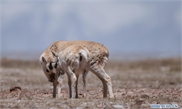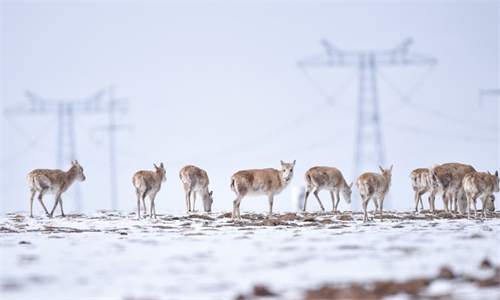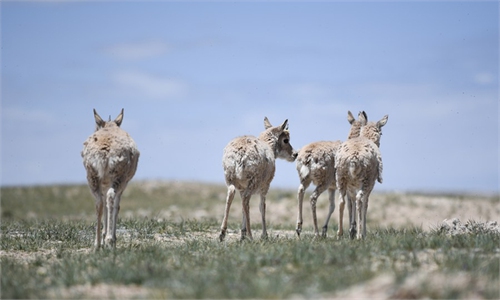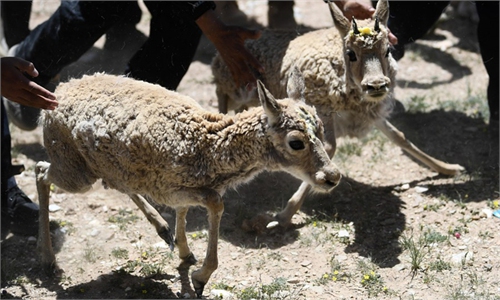Following pandas, Tibetan antelopes off endangered species list in China as population surpasses 300,000
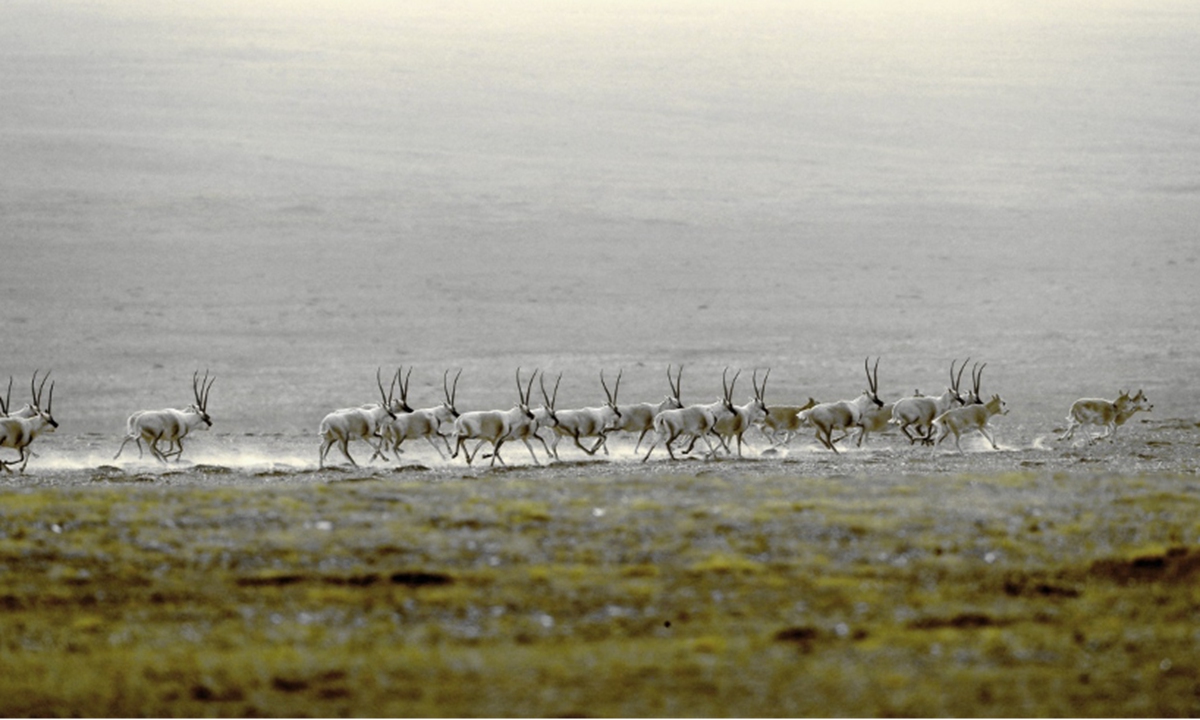
Tibetan antelopes spotted in Qinghai Photo: Courtesy of Ge Yuxiu
The Chinese government has recently ticked Tibetan antelopes off the endangered species list as the species' population surpassed 300,000 across the country in 2021, China Central Television (CCTV) reported on Monday.
Following giant pandas, this is the second wild animal in China to be downgraded from the endangered species in 2021, showing the progress of decades of nationwide conservation and crackdowns on poaching.
Statistics from the National Forestry and Grassland Administration shows that the number of Tibetan antelopes living on the Qinghai-Tibet Plateau has grown from around 70,000 to 300,000 over the past 30 years, CCTV reported.
This impressive reproduction rate has freed these animals from their endangered status, allowing them to enter China's "near-threatened" list.
Zero tolerance for poaching
The first-class national protected animal is indispensable in maintaining the region's ecological balance.
"As a fundamental species in Hoh Xil [Qinghai Province,] Tibetan antelopes maintain the integrity of the biological chain," Qiupei Tashi, head of the Zhuonai Lake protection station in Sanjiangyuan National Park (SNP), told CCTV.
SNP is a natural habitat covering some 123,100 square kilometers on the plateau, including Hoh Xil, in Northwest China's Qinghai Province.
"A string of animals including brown bears, wolves, vultures, eagles and even sparrows feed on them."
Yet due to the immense economic value of Tibetan antelopes, the situation was dire decades ago as poachers ran rampant in Hoh Xil, killing the animals.
Tibetan antelopes were used to make high-quality shawls called shahtoosh, which could sell between $5,000 and $10,000. The sale of these products has been banned in many countries including China, the US and India .
The local government of Qinghai has been fighting against illegal poaching over the past 20 years, achieving a "zero poacher" rate in SNP over the past decade.
"We haven't heard a single gunshot for over a decade," said Qiupei Tashi.
Male 'nannies'
Every June, 40,000 to 50,000 female Tibetan antelopes will travel hundreds of kilometers to places such as Zhuonai Lake in Hoh Xil to bear their offspring, according to the CCTV report.
In order to protect the then-endangered species, staffers at the park formed rescue teams to oversee the safety of the mother antelopes, meanwhile making sure the newborns are kept from danger.
"We collected the antelope babies who are lost randomly in the wild and do not have the ability to protect themselves from predators or other dangers. We feed them in our protection station and free them when they're able to live alone," said a staffer at SNP.
As all "babysitters" at the station are men, people also call them "male nannies," said the report.
Even with the care of the staff, Qiupei Tashi said that only 20 to 30 percent of newborn antelopes would survive the trip back to their original habitats,and sometimes the rate is even lower.
Global Times
